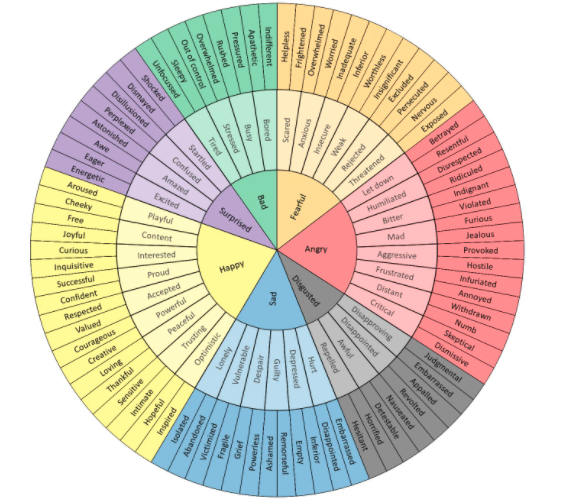How to Identify Feelings and Emotions

In life, we find ourselves constantly trying to overcome some kind of obstacle. This can come in the form of arguments, financial problems, making mistakes etc. However, when we struggle with a mental disorder, it creates an obstacle that seems to be never ending. There is a constant desire to get better, and many of us don’t know how to.
A primary issue that presents itself is not being able to identify how we feel. There seems to be this overwhelming “bad” feeling, and sometimes we can’t find a word to describe it. How can we get better if we don’t even know what the problem is? How do we get help if we can’t communicate what’s wrong?
Recognizing that there is a problem
Recognizing that there is a problem and identifying the feelings and emotions that come with it is the first step towards getting better. As minuscule as it seems, awareness of our emotions is crucial. This is why the Feelings Wheel was created.
The Feelings Wheel is used as a reference to pinpoint exactly what we’re feeling. When using it, we gain more self awareness. From there, we are able to communicate our feelings and seek out what specific help we need.

How to use the Feelings Wheel:
1. Start from the center. Choose which of the 7 feelings you identify with most. Is the feeling negative, or positive? Do you feel a sense of sadness, or maybe an internal fear that you aren’t aware of? When you’re stuck looking at hundreds of feasible emotions, it becomes hard to decipher which one you relate with most. Starting with only 7 basic feelings makes it much easier to pinpoint the more specific ones.
2. After choosing one of the 7 emotions, move outwards on the circle to the second layer. If you choose happy, what form of happiness do you think you’re feeling? Is your happiness coming from a sense of peace, or do you feel proud of something you’ve accomplished? If you chose angry, do you feel humiliated by something you’ve done, or has something made you frustrated? This layer might be more difficult than the first, but by choosing a core emotion, it’s narrowed down to only a few feelings
3. From here, move outward to the final layer. Each feeling from the second layer has only two underlying emotions to choose from. If you’ve found that your fear comes from anxiety, you might be wondering what is making you anxious. Anxiety can come from being overwhelmed, like there’s too much happening and you feel like you can’t process or handle it all. It can also come from worry, which is more future based. In this step, you’ve identified the root feeling.
It is important to note that most of the time, we have multiple feelings. If we feel excluded, we can also feel betrayed and abandoned. The three steps of the Feelings Circle can be used multiple times in one instance to find out all the emotions we’re experiencing.
The struggle of identifying our feelings is never ending. However, the Feelings Circle makes overcoming this struggle far less complicated. The self-awareness gained can bring a sense of relief. Subsequently, we can communicate these feelings to get one step closer to a solution.
* The content presented here is for your information only. It is not a substitute for professional medical advice, and it should not be used to diagnose or treat a health problem or disease.
At Tight Lines … Together We Can
At Tight Lines you will be greeted with a non-judgmental, smiling face that will make the experience feel more like visiting family than a medical appointment. At utmost importance is building a trustworthy relationship with all patients. Get in touch with us to make an appointment.
